Knowing how many and which artwork to have for decorating the walls of your home may seem like child’s play, but it’s not!
The risk of an unpleasant result is really just around the corner.
The wall can be considered a blank canvas, a showcase to show who you are through colors, shapes, and compositions!
And sometimes, that’s where the difficulty is: you risk putting too many different things that create confusion!
Being able to decorate the wall correctly, on the other hand, will make the room unique and special, which will tell who you are!
Paintings and photos have a special meaning for each of us, and the emotions they provoke in us depend on personal experiences and stories.
While it is an emotional process, as happens with home decorating, some steps can help in this choice for harmonious walls that speak of you!
Let’s look at them together!
– EVALUATE THE STYLE YOU HAVE CHOSEN FOR THE DECOR
Whether you have already furnished or are in the process of doing so, the choice of style will condition how you can decorate the walls!
In fact, each style has distinctive features that the decorations must also follow.
The artwork should therefore complement and enhance materials and colors typical of that style.
If you choose a Scandinavian style, you will select photos and pictures in neutral or pastel colors to enhance the typical colors of this style.
Or, if you opt for a shabby style, you will look for “romantic” paintings and photos to keep the characteristic mood of the style!
Of course, you might also decide to create some visual interest by placing artwork in contrast to your chosen color palette or style.
This choice is very characterizing, so do it consciously if you really love this contrast!
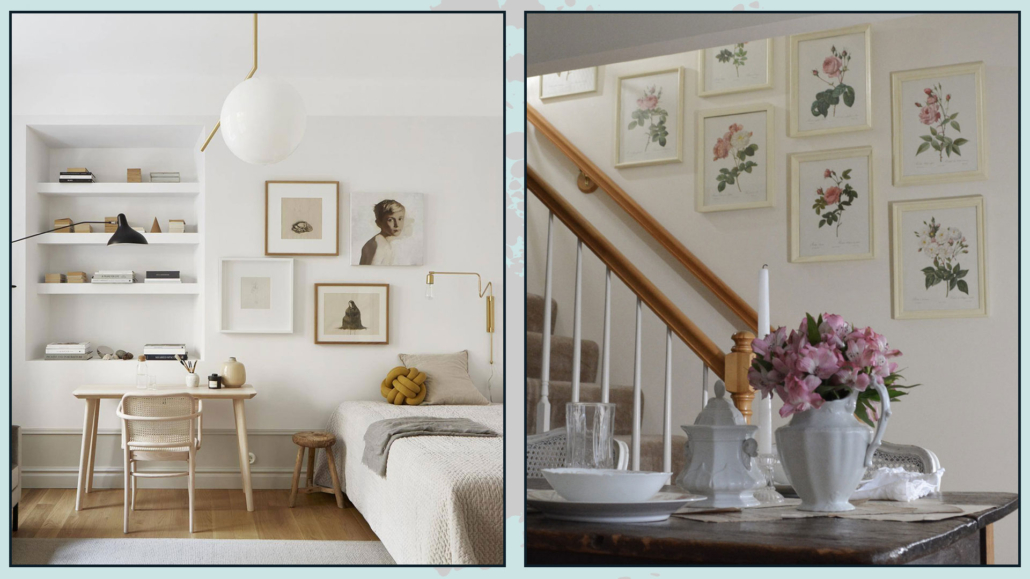
(credits: elledecor.com; janetclarkathome.com)
– WILL THE ARTWORK(S) BE THE ROOM’S FOCAL POINT?
In every room, it is paramount to have a focal point, an area we give the most importance to, and that we want to be the first thing you see when you enter.
(if you want to know more about the focal points I talk about them here)
Each room, however, can have only one focal point; otherwise, it would be confusing.
Is the wall where you want to put the artwork(s) the room’s focal point, or not?
The choice of hanging pieces will obviously be different:
– if it is a focal point, then it will have to be a piece of some impact,
– otherwise, it will have to be an element that complements but “softer.”
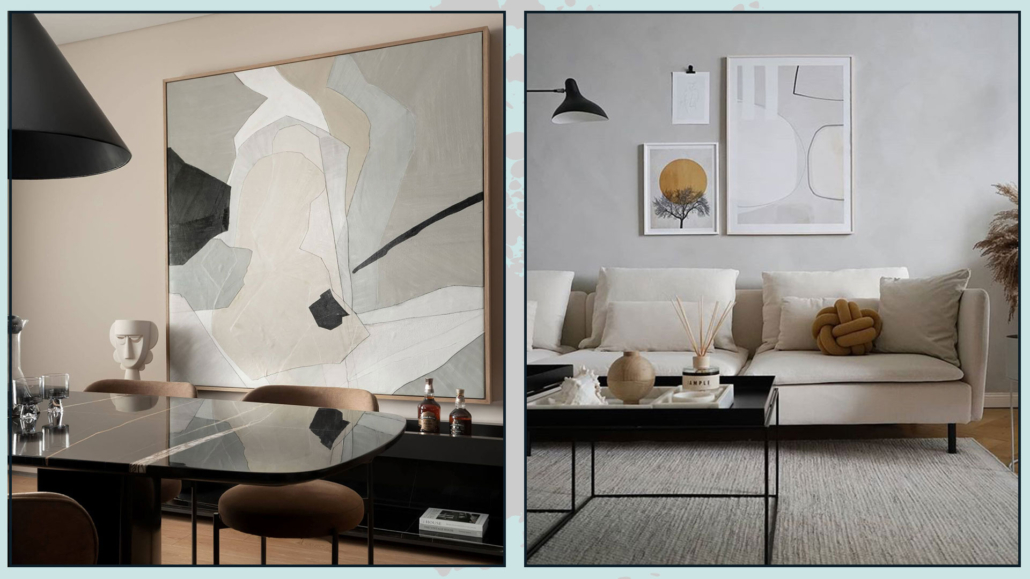
(credits: Studio Bomb; scandinaviastandard.com)
– SCALE AND PROPORTIONS
It happens very often to have too small paintings compared to the wall and/or furniture placed underneath.
A painting that is too small makes the wall appear unfinished, while if it is too large, it will create visual clutter!
A painting, or a gallery of artworks, must be proportionate, not only to the wall where you will hang it but also to the furniture in the room.
If you hang a picture above your bed, sofa, or an item of furniture, this picture should be 2/3 the width of the piece of furniture.
It is one of the measures that matter in furniture; I talk about it here.
If you choose to put only one picture on a wall and nothing else, this should take up 60 to 75 percent of the wall!
Smaller would be lost and seem to be randomly placed there; larger would suffocate the environment.
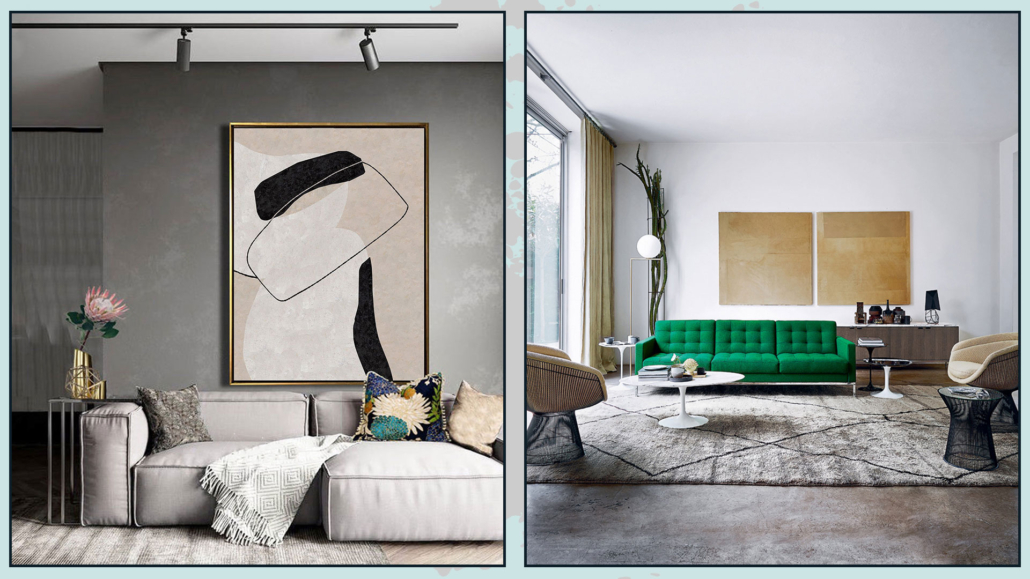
(credits: Etsy- ArttideArt; Knoll)
– GALLERY WALL
An alternative to a single artwork is to create a gallery wall with pieces of different sizes.
That definitely creates some movement that can generate a playful atmosphere.
Correctly choosing the pieces to use for the composition could be a bit challenging.
There must be a common element that binds them together!
It could be the subject, the colors, or the frames!
Create, prudentially, your composition on the floor first to see if everything is harmonious.
Also, try different arrangements to choose the one you really like and represent the most!
Then use pieces of paper or cardboard of the same size as the frame, mark the position of the hooks too, and fix these sheets to the wall with paper tape.
This will also allow you to see if the composition is proportionate to the wall and especially to check the heights!
When you are sure everything is okay, plant the nails and replace the paper with the real frames!
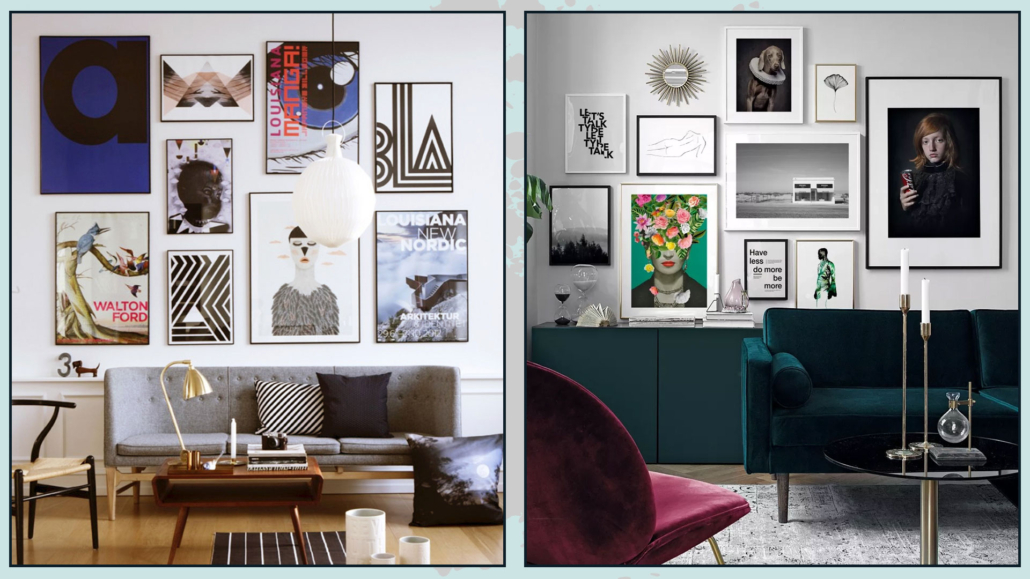
(credits: The Chrishelle Factor; Anna K. Cottrell)
– ATTENTION TO HEIGHTS AND DISTANCES
As mentioned earlier, another thing to consider is the heights at which you hang and, in the case of composition, the distances between the various elements too.
If a painting is hung too high, it will seem to “fly” and be a stand-alone piece!
In the case of multiple paintings, it will be confusing if they are too close; if they are too far apart, they will not seem to belong to the same composition.
The heights and distances to know are:
– every artwork (or composition) center should be at eye level, between 145 and 160 cm from the ground.
– the distance between the picture and the sofa or bed should be around 15 to 25 cm
– in case of compositions, the frames should be spaced 5 to 10 cm apart.
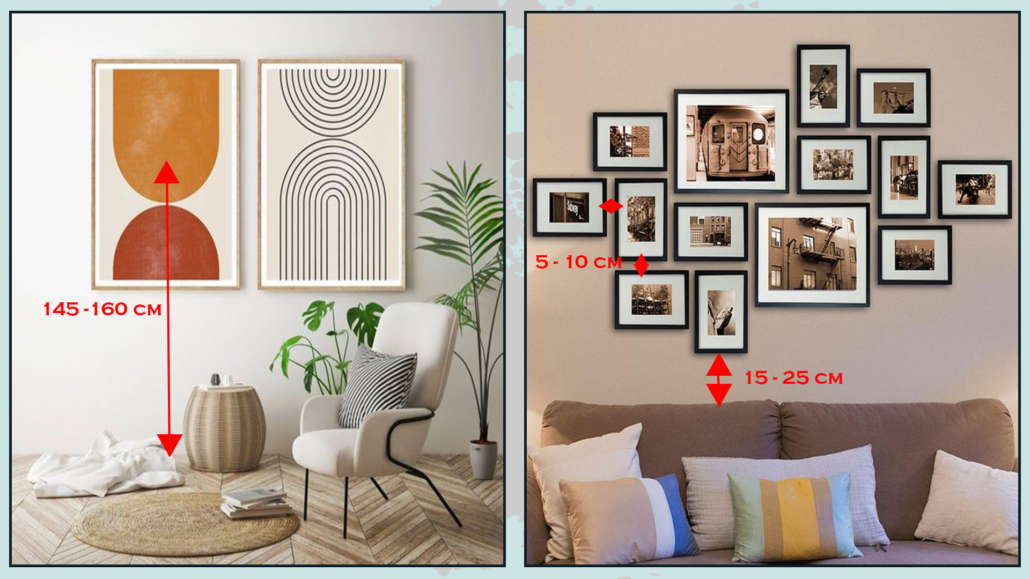
(credits: Etsy)
– BE CAREFUL HOW YOU BRING BACK THE COLORS IN THE REST OF THE ROOM!
We saw earlier that paintings should echo the style and colors of your furniture to complement and enhance.
One mistake I have seen people make is to match the exact colors, for example, of the sofa!
In this way, it becomes a bit too much!
If it is good to pick up the colors, it is also excellent to pick them up in different saturations and shades!
You stay in the palette, but you also create some movement and rhythm!
Also pay attention to the patterns and textures present and maybe pick them up in the paintings!
One example, if you have a lot of natural wood in your home, images of nature, such as the forest, are a powerful reminder!
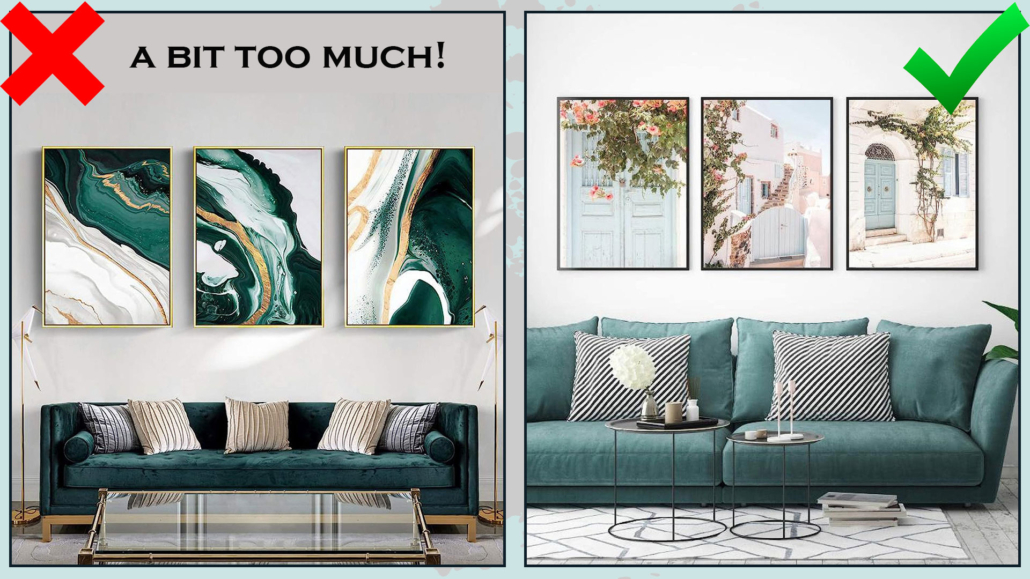
(credits: Amazon)
– FRAMES YES OR NO?
Frames, in general, even the simplest ones, give a touch of elegance and “solemnity,” while canvas alone creates more informal atmospheres.
Usually, unframed canvases are less expensive than framed ones, my advice is to avoid buying those generic canvases, which you find on a large scale.
Get original paintings instead; they will definitely have a different impact!
In the case of frames with glass, pay attention to the lighting to avoid the risk of light reflection hiding the picture!
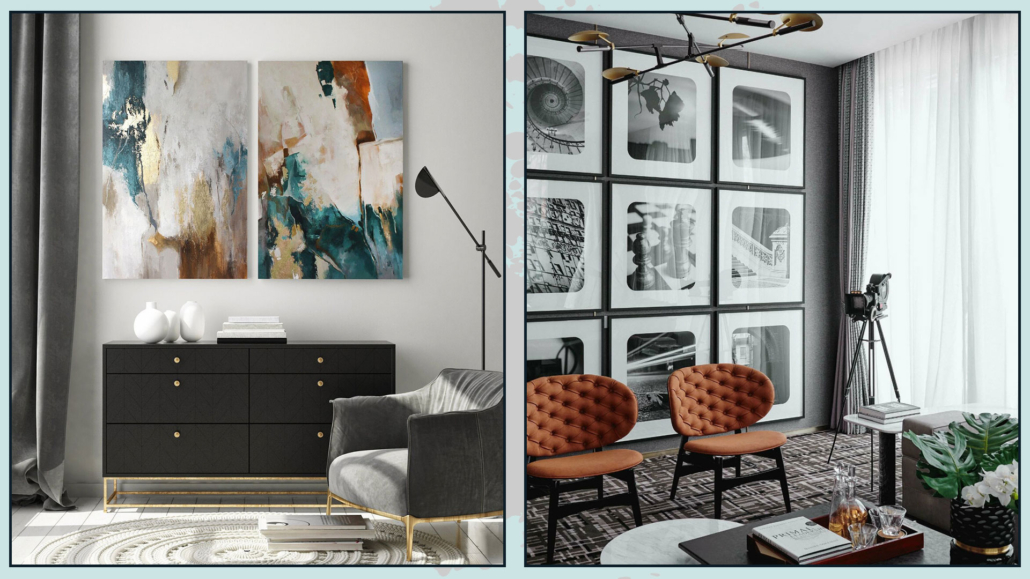
(credits: etsy; Boxerjam)
– NOT JUST WALLS!
There are not only walls for displaying artwork!
You could put them on a bookshelf, cupboard, or the floor if they are huge!
That creates something different and particular by bringing some visual interest to the environment!
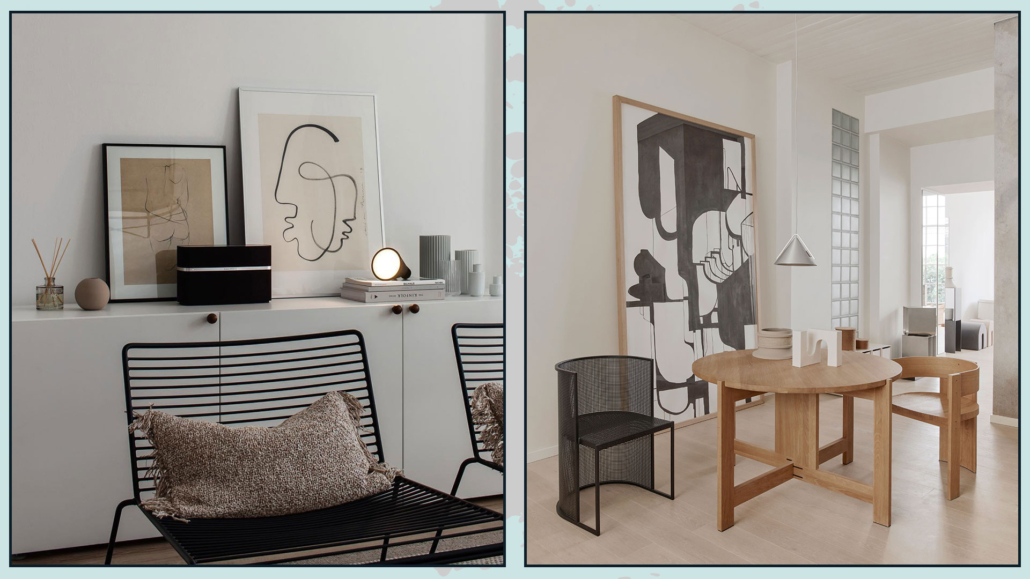
(credits: scandinaviastandard.com; kristina_dam_studio)
I hope this article was helpful and you love it; in case, let me know in the comments!
Feel free to share it with anyone you think might be interested, I will be honored, and it will help me get my name out there.
If you feel that your home, or some environment of it, does not reflect you enough, do not wait any longer and book your consultancy!
This post is also available in: Italian

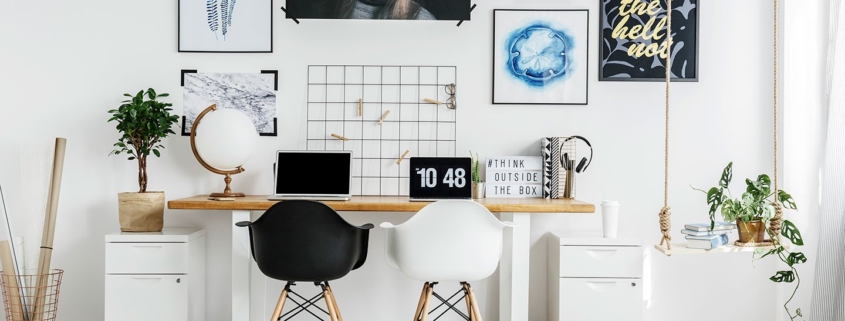
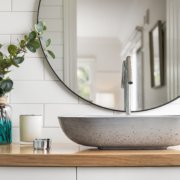
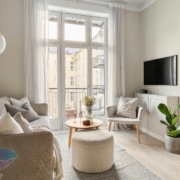
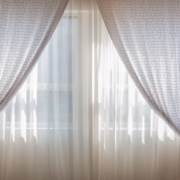
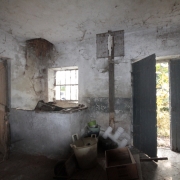

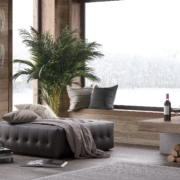

Leave a Reply
Want to join the discussion?Feel free to contribute!